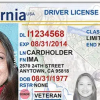US Fully Implements Real ID Act, Restricting Undocumented Immigrants' Travel

The United States fully implemented the Real ID Act on May 7, 2025, ushering in a new era of identification standards for domestic travel and access to federal facilities.
While designed to enhance security, the policy presents significant challenges, particularly for millions of undocumented immigrants who are ineligible to obtain federally compliant identification. The Real ID, recognisable by the star in the upper-right corner, goes beyond a standard driver’s license, meeting federal verification standards established in the aftermath of the 9/11 attacks. Enacted in 2005, the law’s full implementation faced years of delays.
Now, in effect, individuals without legal residency status are excluded from obtaining it, preventing undocumented immigrants from using state-issued IDS for air travel or federal facility access. For undocumented individuals affected by the new mandate, viable alternatives do exist, albeit requiring careful planning. Despite the Real ID requirement for domestic flights, the Transportation Security Administration (TSA) continues to accept other forms of identification. A foreign passport remains a valid option for those needing to travel within the US.
Additionally, residents in certain states may have access to Enhanced IDS or driver’s licenses, offering another pathway to identification, although availability varies. Employment Authorisation Documents (EADS), issued by US Citizenship and Immigration Services, also serve as accepted identification at TSA checkpoints. Travellers using these alternatives should anticipate more extensive security screening and allow extra time at airports. Beyond travel concerns, the Real ID requirement affects interactions with law enforcement and government institutions.
Many states provide undocumented immigrants with non-federally compliant identification cards or driving credentials, useful for local transactions. These documents, while helpful for routine activities, do not grant access to federally regulated spaces or transportation networks. Given the varied state policies regarding undocumented residents, individuals must stay informed on the options available in their jurisdiction.
Federal agencies emphasise that the absence of a Real ID should not be used as a pretext for discrimination or questioning immigration status. The Department of Homeland Security (DHS) has stated explicitly that not possessing this identification does not automatically indicate unlawful residency. Nonetheless, undocumented individuals must be cautious and avoid falsifying documents or misrepresenting information, as such actions can lead to serious legal consequences.
Legal permanent residents are not exempt from the Real ID requirement. Those yet to obtain a compliant identification should apply promptly, given the lengthy wait times at Department of Motor Vehicles (DMV) offices nationwide. Early preparation is crucial due to the high demand for Real ID applications. The implementation of Real ID introduces new complexities into the US immigration landscape. While millions must adjust to stringent identification standards, alternative legal pathways remain available.





Add new comment